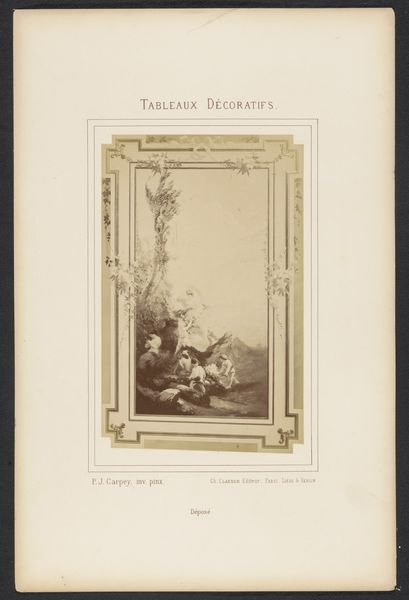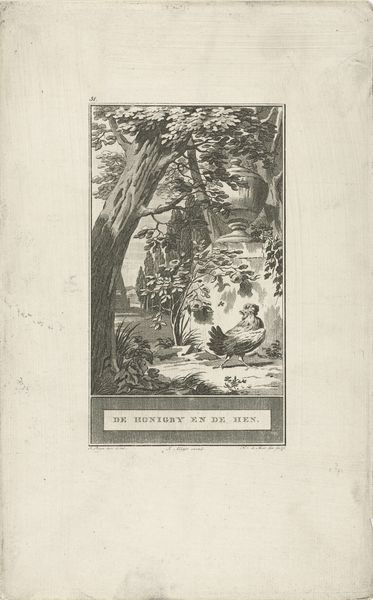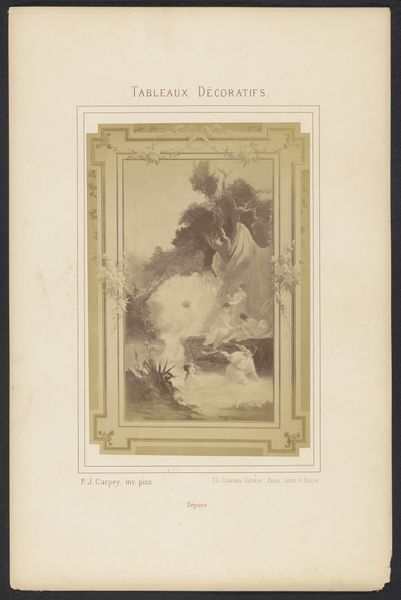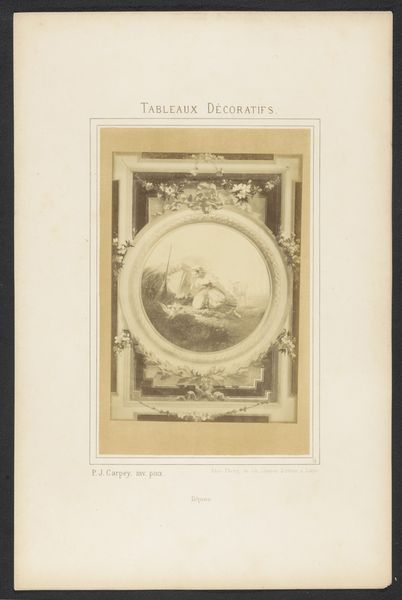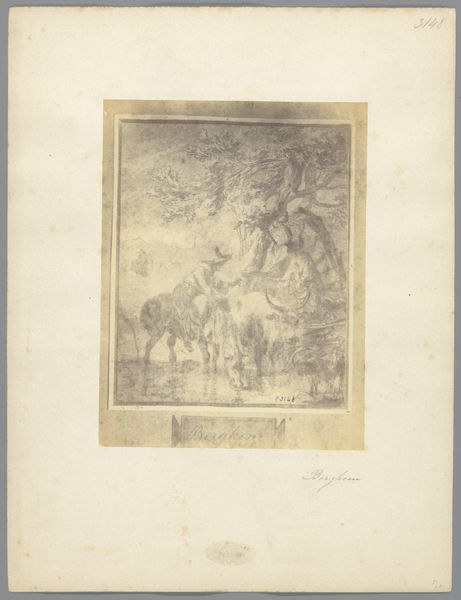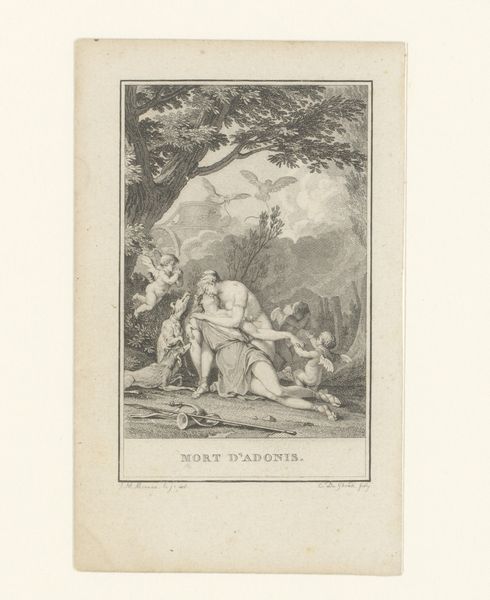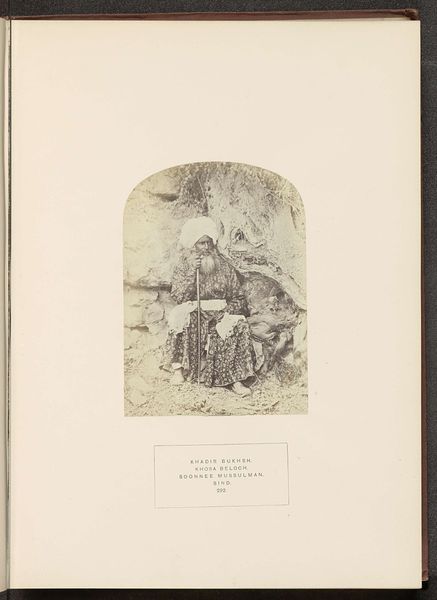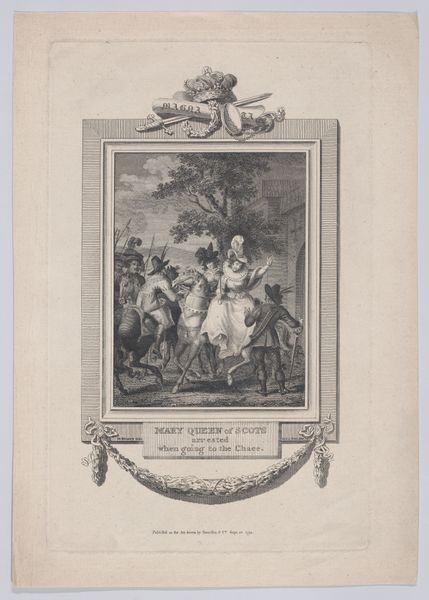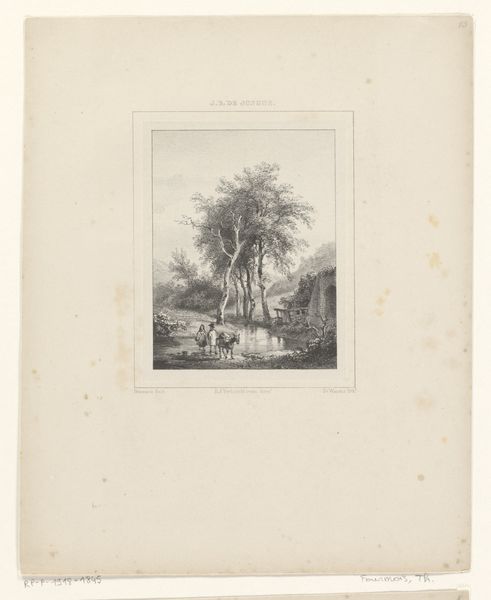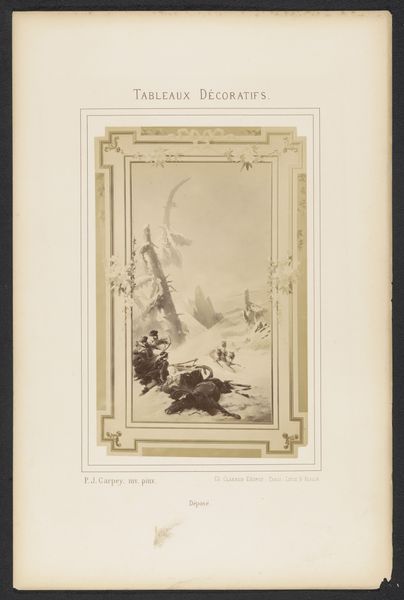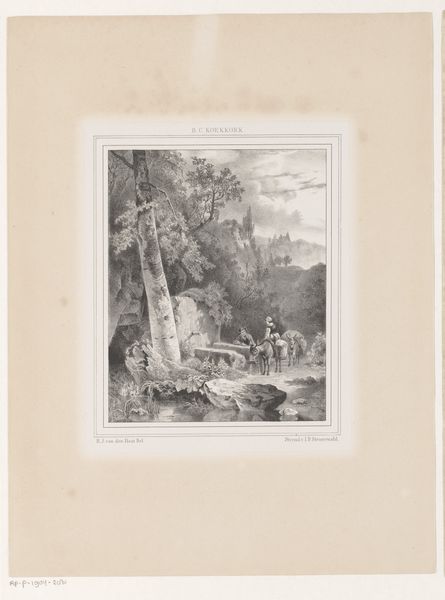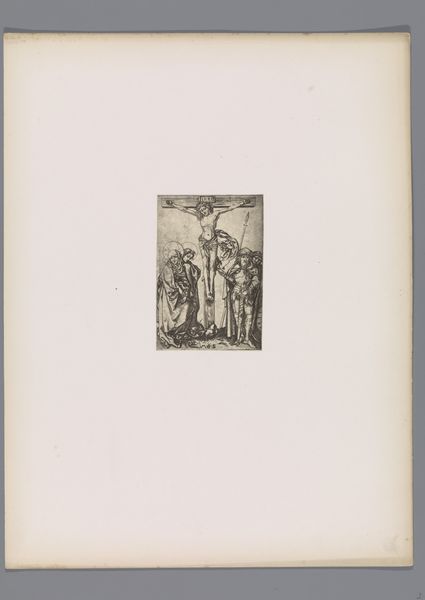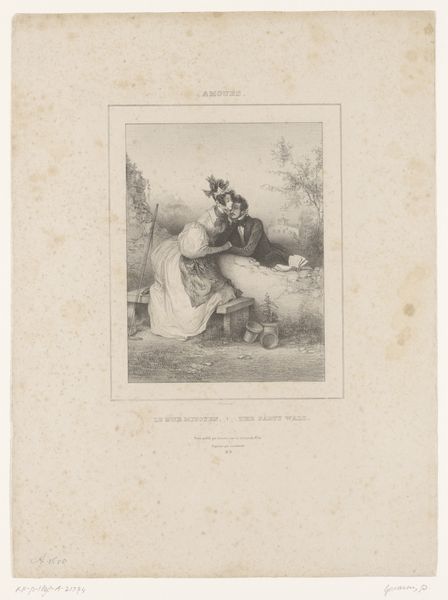
Fotoreproductie van een schilderij van drie vrouwen en een man die voor een sokkel zitten met daarop een buste van een onbekende man, door P. J. Carpey before 1881
0:00
0:00
print, photography
# print
#
landscape
#
photography
#
genre-painting
Dimensions: height 262 mm, width 172 mm
Copyright: Rijks Museum: Open Domain
Editor: This print, a photographic reproduction before 1881 of a painting by P.J. Carpey, depicts three women and a man seated before a bust. There's a stillness to the scene that feels both serene and melancholic. What strikes you most about this image? Curator: It’s fascinating how photography here intersects with genre painting. The "tableau decoratif" suggests its original context, likely meant for middle-class consumption. We see echoes of classical themes filtered through a distinctly 19th-century lens. Who was the patron, and what narratives are these figures enacting around this anonymous bust? Is it mourning, contemplation, or something else entirely? Editor: I hadn’t considered the social aspect. It seems to position the viewer as a member of the educated middle class invited to contemplate on the great masters. Does the very act of reproducing art change its meaning and value? Curator: Absolutely. Photographic reproduction democratizes art. Prints like these brought culture into homes, but also shifted art's role from unique artifact to mass-produced image, embedded in different social spaces. Note too, that such reproduction granted visibility – and market value – to the artists like Carpey whose work it captured. In what venues, would you speculate, would audiences have seen it? Editor: Probably parlors or studios, accessible places where it would shape ideas about beauty, art, and maybe even civic values? I suppose even back then, visual culture was being consumed. Curator: Precisely! Reproductions had power, defining what was considered worthy of preservation and display. It challenges us to consider whose stories get told. Editor: It's eye-opening to think about how even a seemingly simple print reflects such complex social and artistic shifts. It highlights the museum's continued important role in critiquing historical and current values. Curator: Indeed. It reminds us that what we see in museums, or in photographic reproductions like this, are carefully constructed representations that participate in ongoing conversations about power, identity, and access.
Comments
No comments
Be the first to comment and join the conversation on the ultimate creative platform.
